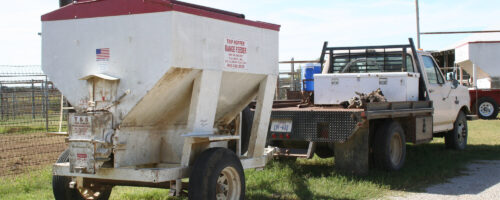Culling bucks
Is culling bucks a practical management practice in a wild, free-ranging deer population? Here's some reasons why it may be a wasted effort.
Most people who manage or hunt white-tailed deer on private land want to produce or harvest bucks with large antlers. Three primary factors influence antler size: age, nutrition and genetics. Although all three are important, only age and nutrition can be effectively manipulated in wild, free-ranging deer herds. Age is the primary factor limiting buck size on most properties. Buck age can be improved or increased by decreasing buck harvest and allowing more bucks to get older. The most economical way to improve buck nutrition is to improve deer habitat and decrease deer numbers through doe harvest.
Many managers and hunters try to influence antler size by culling bucks. Culling is the intentional harvest of bucks with supposed inferior genetics for antler growth. Genetics is unquestionably important because many studies and deer farms have proven antler size can be increased through controlled breeding in pens. However, is culling bucks a practical management practice in a wild, freeranging deer population? The Noble Research Institute wildlife staff does not believe it is appropriate in most free-ranging deer herds for the following reasons:
- We question whether it is possible to consistently identify “cull bucks” based on their phenotypic antler characteristics. Ken Gee monitored antler development of tagged bucks at the Noble Research Institute Wildlife Unit for 24 years. Some young bucks that seemed to have inferior antlers developed into spectacular trophies and several promising looking young bucks developed into only mediocre mature bucks.
- Breeding cannot be controlled among wild, free-ranging deer. In a pen, both the male and female genetics of each breeding are controlled. Penned deer and wild, free-ranging deer are completely different management scenarios.
- All young bucks grow larger antlers as they age until some point later in their lives when antler development peaks. Some evidence indicates antler size of most wild, free-ranging bucks continues to increase throughout their lives contrary to some penned studies. When wild bucks live long enough, antler sizes of nearly all bucks peak after 4 years old and many do not peak until 6-9 years old.
- Each buck probably has genes for large antlers, mediocre antlers and small antlers regardless of his phenotypic antler expression. Most offspring from bucks with Boone and Crockett record book eligible antler scores on the Noble Research Institute Wildlife Unit did not grow spectacular antlers, and some offspring from mediocre-antlered bucks grew spectacular antlers. Does contribute at least half of antler genetics. Currently, it is not possible to select for trophy antlers among wild, free-ranging does.
- In a pen, one buck can service several does because does cannot escape the buck and he does not have to travel and cover hundreds of acres. In wild, free-ranging situations, a large percentage of the buck population and all adult age groups are involved in breeding does. Even though white-tailed deer are polygamous, adult does are receptive to bucks only during a few days. Most Oklahoma and north Texas does are in heat during the same few weeks, so many bucks are necessary to service all the does in wild, free-ranging populations.
Theoretically, harvesting “inferior” bucks would seem to make sense, but seldom helps the situation in the real world of wild, free-ranging white-tailed deer. The futility of culling bucks in wild, free-ranging deer was demonstrated by a research project involving a very intensive culling program across four years on the Comanche Ranch in Texas. Culling did not increase antler size in successive generations. The following points are the most important criteria for producing large-antlered bucks in a freeranging situation:
- provide excellent, diverse habitat on as many acres as possible;
- harvest relatively few bucks, probably less than 10 percent of the buck population;
- maintain deer abundance within a habitat’s carrying capacity;
- maintain adult sex ratio as close to 1:1 as possible; and
- avoid harvest of young males, especially those less than 4 years old.
In summary, culling bucks probably is a waste of bucks and a wasted effort.



Comment